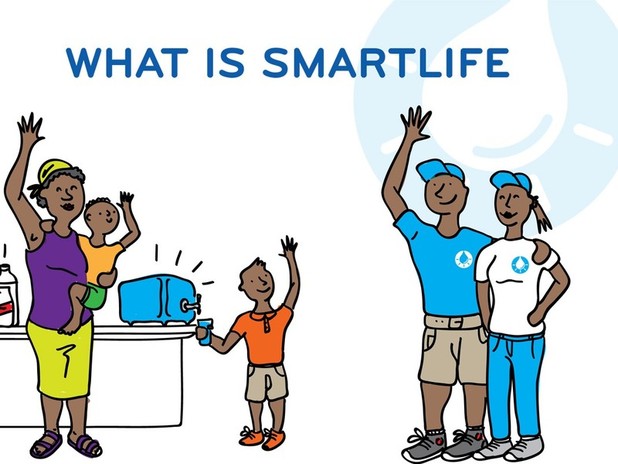June 07, 2012
At IDEO.org, we talk a lot about looking at the whole ecosystem when we tackle a problem. While this has consistently framed our understanding and engagement on various projects, our scope of work has often focused on just one piece of the puzzle. However, Kenya Water + Health is a project where the problem at hand was the system itself.
Seeing the System
As noted in our earlier blog posts, our clients on this project (WSUP, GAIN, and Unilever) provided us with a compelling challenge: How might we create a scalable consumer-facing offer incorporating a selection of hygiene, nutrition, and water products and services for low-income urban Kenyans? Combining categories that have often been looked at through more individual lenses meant understanding and harnessing the potential of an entire system.
We have worked towards this goal over the past nine weeks. Our process led us to spend two weeks in Nairobi; interview 50 people; create live prototypes of two kiosks, one mkokoteni cart, and one delivery service; hold eight transcontinental conference calls; and go through reams of Post-its! In the end, we discovered that the path to creating a sustainable system can be illustrated with a few key learnings:
Design for People, Not the Business
We took an iterative, human-centered approach to defining our offer. Through our interviews, we were able to see firsthand core issues like the fact that people understand the benefits of water but can seldom access it reliably or affordably. The interaction with our customers during our prototypes demonstrated that instead of one optimal touch point, it was important to have a combination of door-to-door, retail location, and delivery services to solidify people’s confidence. By putting people at the heart of our research and design process, we were able to develop five foundational beliefs that could create a strong and holistic offer:
- Clean Water is always the driver
- People trust and value brands
- The more touch points, the more trust
- People are willing to pay in advance
- The woman is the champion of health in the household
Push at the Extremes
Our key findings provided a clear baseline, but there are still a few outstanding questions that remain:
- Should the SmartLife service provide clean drinking water or clean all-purpose water?
- Should the SmartLife service focus on personal care products or household products?
- Should the SmartLife service be marketed as an aspirational brand or a practical brand?
While the ultimate business might be some combination of these characteristics, we feel important insights can be gained from testing consumer reaction to the extreme offer. Since our clients are willing to try multiple pilots, we have proposed running two pilots with very different brand propositions to explore these questions:
- Aspirational Wellness: A membership service promoting a healthy lifestyle through clean drinking water and carefully curated personal care products.
- Everyday Essentials: A practical service meeting everyday needs through clean all-purpose water and common household and hygiene products.
Engage the Entire Ecosystem
We quickly found that designing a solution to such a complex problem required looking at both the micro and macro elements of the entire ecosystem. To that end, we explored every aspect of the business including the customer experience, the business model, the financial breakdown, and the brand expression. We constantly zoomed in and zoomed out, making sure that the pieces make sense both individually and working together. For example, the SmartLife health education scenario described in the customer experience story is connected to the health education component described in the business model, accounted for in the marketing and staff figures in the financial analysis, and visually represented in the brand expression section.
Tackling the system also meant collectively pulling from the varied skill sets on our team, from business design to architecture to industrial design to human factors. It also meant tapping into the diverse knowledge base of our clients, from products to water to health. Not only did our entire team help shape a system, we worked like one as well.
Empower the Client, Staff and Customers
Our clients intend to go forward with the pilots in the next few months. The final deliverable we created includes a launch plan. The plan lists what action items still need to be completed, when to complete them, and how to evaluate progress along the way. Some of the target areas of work include selecting the following: a location, a water source and treatment method; the product mix, staff, and a marketing strategy.
While we have worked out many of the larger ideas behind the business, our model is essentially a framework. It is intended to be continually reflected upon and adjusted. Additionally, from sales tools like the highly visual SmartLife binder to a flexible ordering system for water and products, our framework helps our clients empower staff and customers to also participate in shaping this business.
Moving forward
This was one of the most fun - and comprehensive - projects my co-IDEO.org fellows and I have worked on this year. Looking at this system both in its entirety and through each of its parts enabled us and our clients to create what we believe will be a highly impactful and scalable offer. We’re excited to support our clients as they move forward in making this a reality. Stay tuned for news from Nairobi!










